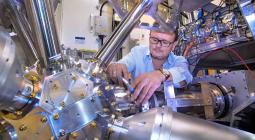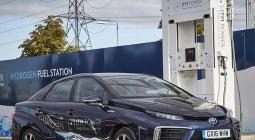Renewable Hydrogen In The Heart Of Coal Country.

Enthusiasm is building for renewable hydrogen to replace fossil fuels in key industrial sectors, and ammonia is one of them. Ammonia production consumes vast quantities of natural gas globally, but not for long if all goes according to plan. The latest development concerns two new ammonia projects in Australia, a country that is still very much in the iron grip of fossil fuels.
The ammonia news bubbled up on September 30, when ARENA (the Australian Renewable Energy Agency) declared that it was earmarking public funds for two renewable hydrogen projects related to ammonia production.
One involves $1.9 million in ARENA funding for a feasibility study involving an existing ammonia plant owned by the company Queensland Nitrates Pty Ltd, near Moura in Central Queensland. The study consortium also includes the France-based renewables leader Neoen and the diversified energy services company Worley.
Queensland Nitrates is under the umbrella of Wesfarmers Chemicals, which is important, but more on that in a minute.
Queensland’s Moura facility currently produces ammonia with hydrogen sourced from natural gas. The feasibility study is aimed at replacing 20% of its gas consumption with renewable hydrogen. The new H2 would be sourced through electrolysis from a combination of wind, solar, and energy storage (electrolysis is fancyspeak for “splitting” hydrogen from water with an electrical current).
The other announcement concerns a proposal for a “green” ammonia plant in Moranbah, billed as the largest of its kind in the world. This one involves $980,000 for a feasibility study involving an existing ammonia facility owned by Dyno Nobel Moranbah Pty Ltd (part of theIncitec Pivot Limited family).
As with the Moura project, the proposal involves deploying renewable energy to generate hydrogen from water, with the aim of replacing natural gas as a feedstock.
Australia Eyeballs A Renewable Hydrogen Future
Australia is a global coal-exporting giant but apparently it sees the writing on the wall. Through ARENA, the country has prioritized renewable hydrogen for industrial operations, with the aim of “future proofing our energy system and economy and helping to further unlock the vast renewable resources Australia has on offer.”
ARENA points out that ammonia production currently accounts for fully half of all global hydrogen consumption. Since natural gas is the primary source of hydrogen today, that leaves a huge, gaping opportunity for renewable energy to step in and replace natural gas.
In other words, Australia could become a major exporter of renewable hydrogen.
In a public statement, ARENA CEO Darren Miller said that “hydrogen is a huge opportunity for Australia, both for domestic use and as an export opportunity – and we believe that you cannot realise the export potential without a domestic market, which is why ARENA is looking to fund renewable ammonia and other domestic applications.”
A Stab In The Heart Of Coal
Got all that? Now let’s circle back around to Wesfarmers Chemicals. The company is part of Wesfarmers Limited. Wesfarmers began life as a farmers’ cooperative in 1914. Since then it has grown to become one of the largest employers in the entire country in addition to being among the largest publicly listed companies, so if Wesfarmers Chemicals is eyeballing renewable hydrogen as a pathway to future growth, that could ripple out to the whole parent company, with a consequent impact on a big chunk of Australia’s economy.
Here’s another interesting thing about the hydrogen-ammonia connection: there is a growing interest in using ammonia as a relatively inexpensive, stable platform for transporting hydrogen for export.
Of course, the devil is in the details. For one thing, there’s the cost of extracting the hydrogen from ammonia once it arrives at its use point.
Nevertheless, the idea has caught on in the US, and Australia appears to be interested as well.
In August 2018, ARENA had this to say on the subject of exporting green hydrogen:
“With its proximity to Asia, established trading relationships as an energy exporter, infrastructure and its abundant wind and solar resources, Australia is well positioned to become a leading exporter of hydrogen.”
Do tell!
All of this is happening apace with another major new energy initiative in Australia, aimed at exploiting the country’s vast reserves of brown coal. The idea is to source hydrogen from coaland export the H2 to Japan.
I know, right? Yikes! The coal project is currently in the pilot phase, so it looks like the race is on between green hydrogen and the other stuff for the hearts and minds of H2 buyers.
On the plus side for fans of green hydrogen, the coal project includes a carbon capture element that will add significant expense, all things being equal.
In addition, leading global companies are racing to clean up their supply chains as consumers become more sophisticated about environmental impacts. Billing coal-to-hydrogen as a way to “convert the world’s most polluting fuel…into its cleanest” might have fooled some people just a few years ago, but it’s not fooling anyone now.
If the coal project does bear fruit, it may be confined to government-supported niche applications (looking at you, “green” Olympics) that are intended to shore up diplomatic and trade relations between certain countries.
If you have any thoughts about that, drop us a note in the comment thread. Meanwhile,CleanTechnica is reaching out to the US Department of Energy for some thoughts on the coal-to-hydrogen issue, so stay tuned for more on that.
Follow me on Twitter.
Image: via US Department of Energy.
1 October 2019
Clean Technica




